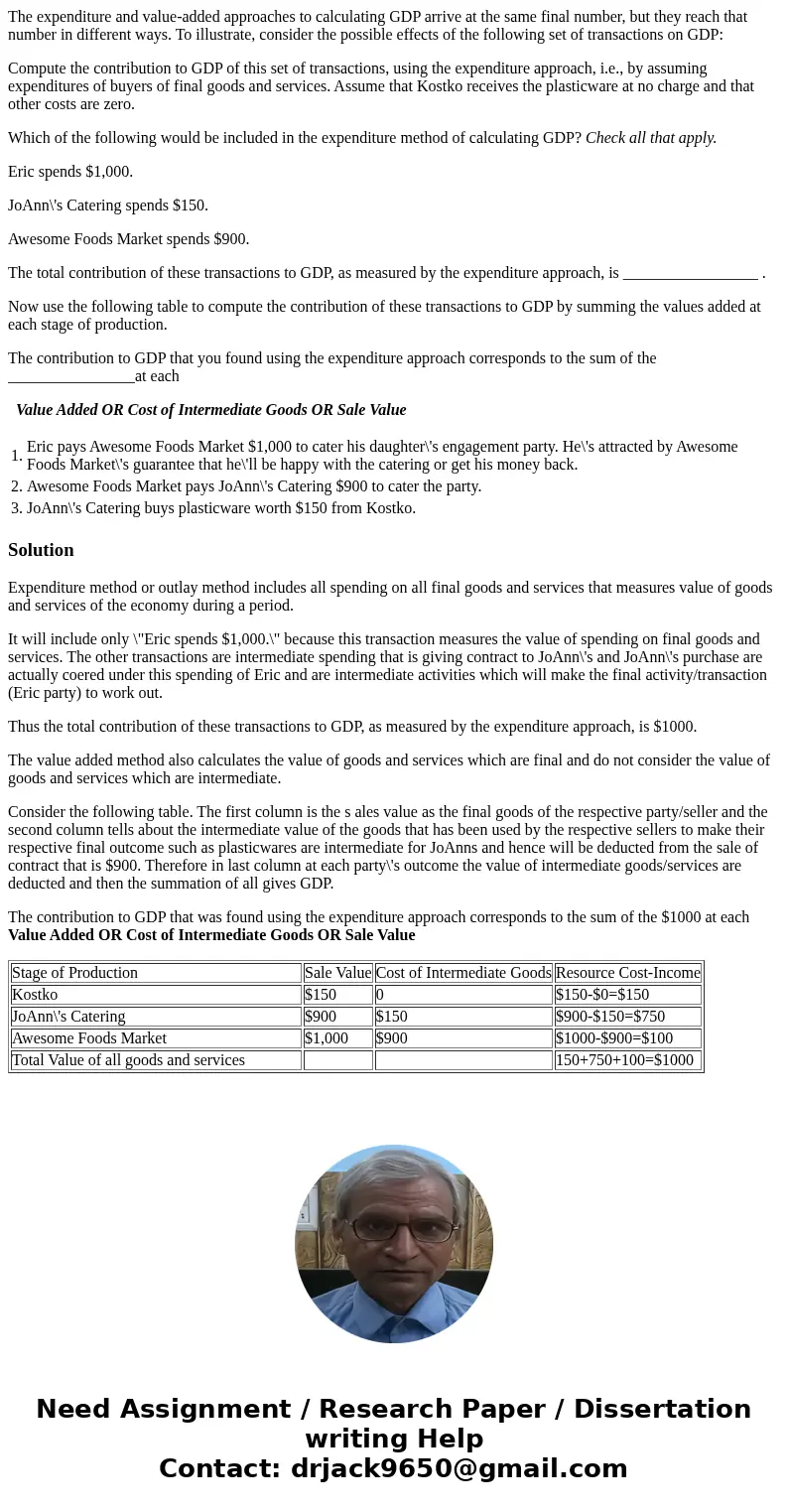The expenditure and valueadded approaches to calculating GDP
The expenditure and value-added approaches to calculating GDP arrive at the same final number, but they reach that number in different ways. To illustrate, consider the possible effects of the following set of transactions on GDP:
Compute the contribution to GDP of this set of transactions, using the expenditure approach, i.e., by assuming expenditures of buyers of final goods and services. Assume that Kostko receives the plasticware at no charge and that other costs are zero.
Which of the following would be included in the expenditure method of calculating GDP? Check all that apply.
Eric spends $1,000.
JoAnn\'s Catering spends $150.
Awesome Foods Market spends $900.
The total contribution of these transactions to GDP, as measured by the expenditure approach, is _________________ .
Now use the following table to compute the contribution of these transactions to GDP by summing the values added at each stage of production.
The contribution to GDP that you found using the expenditure approach corresponds to the sum of the ________________at each
Value Added OR Cost of Intermediate Goods OR Sale Value
| 1. | Eric pays Awesome Foods Market $1,000 to cater his daughter\'s engagement party. He\'s attracted by Awesome Foods Market\'s guarantee that he\'ll be happy with the catering or get his money back. |
| 2. | Awesome Foods Market pays JoAnn\'s Catering $900 to cater the party. |
| 3. | JoAnn\'s Catering buys plasticware worth $150 from Kostko. |
Solution
Expenditure method or outlay method includes all spending on all final goods and services that measures value of goods and services of the economy during a period.
It will include only \"Eric spends $1,000.\" because this transaction measures the value of spending on final goods and services. The other transactions are intermediate spending that is giving contract to JoAnn\'s and JoAnn\'s purchase are actually coered under this spending of Eric and are intermediate activities which will make the final activity/transaction (Eric party) to work out.
Thus the total contribution of these transactions to GDP, as measured by the expenditure approach, is $1000.
The value added method also calculates the value of goods and services which are final and do not consider the value of goods and services which are intermediate.
Consider the following table. The first column is the s ales value as the final goods of the respective party/seller and the second column tells about the intermediate value of the goods that has been used by the respective sellers to make their respective final outcome such as plasticwares are intermediate for JoAnns and hence will be deducted from the sale of contract that is $900. Therefore in last column at each party\'s outcome the value of intermediate goods/services are deducted and then the summation of all gives GDP.
The contribution to GDP that was found using the expenditure approach corresponds to the sum of the $1000 at each Value Added OR Cost of Intermediate Goods OR Sale Value
| Stage of Production | Sale Value | Cost of Intermediate Goods | Resource Cost-Income |
| Kostko | $150 | 0 | $150-$0=$150 |
| JoAnn\'s Catering | $900 | $150 | $900-$150=$750 |
| Awesome Foods Market | $1,000 | $900 | $1000-$900=$100 |
| Total Value of all goods and services | 150+750+100=$1000 |

 Homework Sourse
Homework Sourse